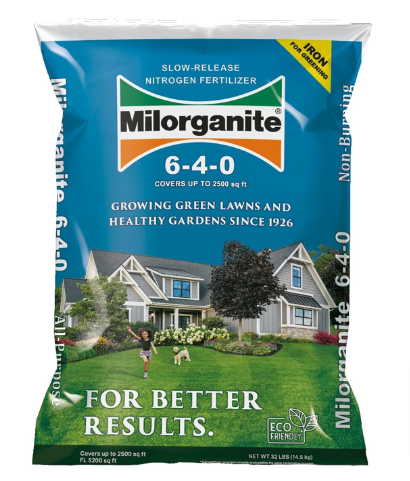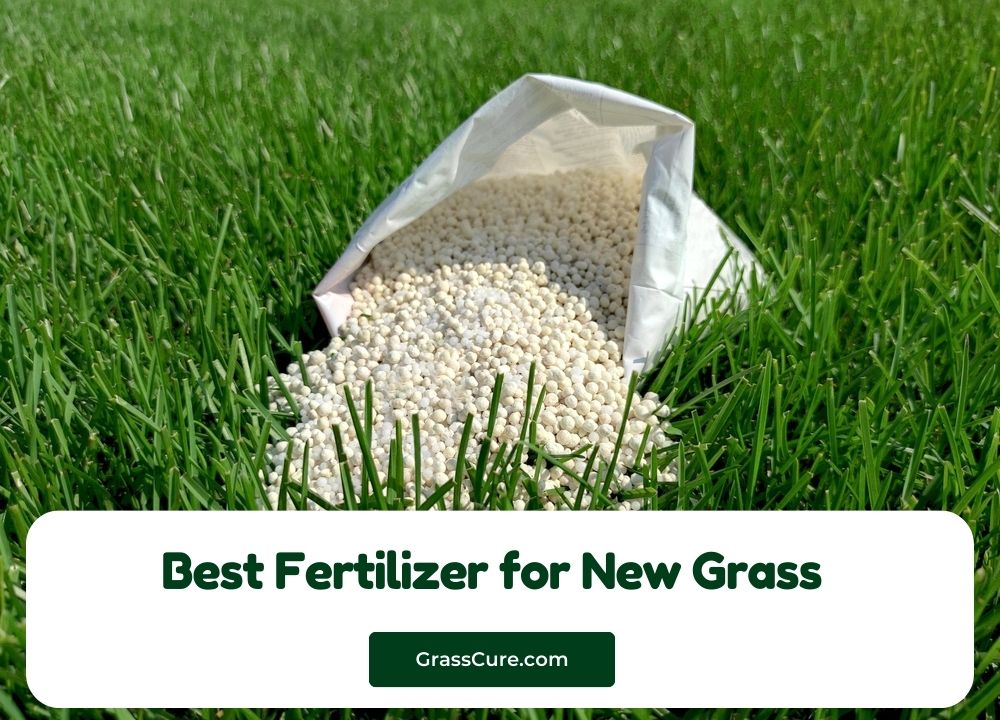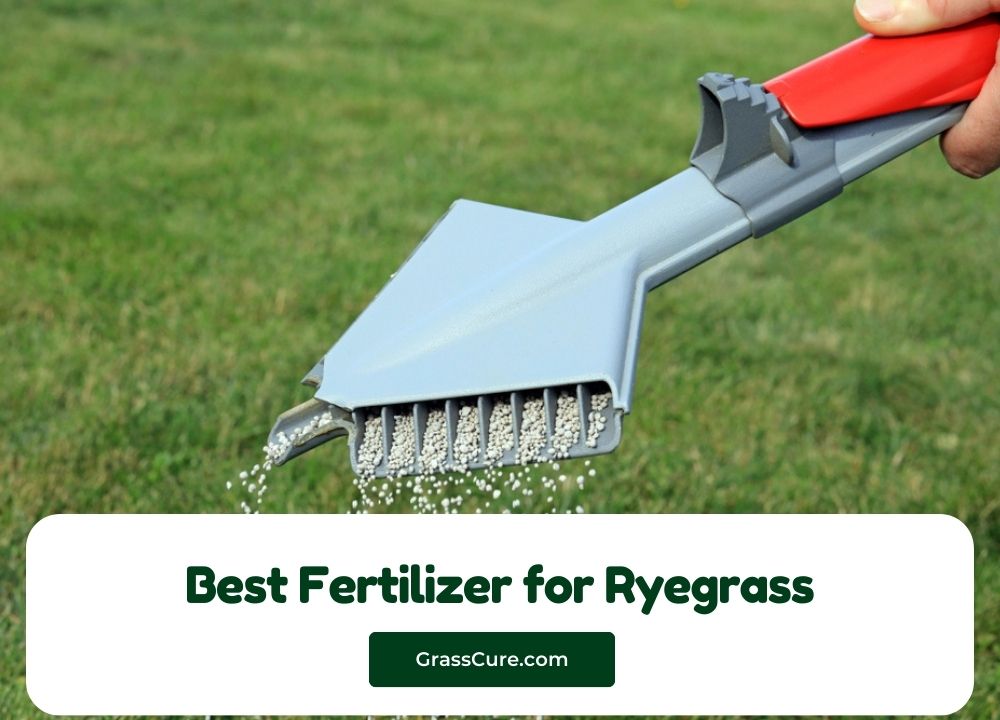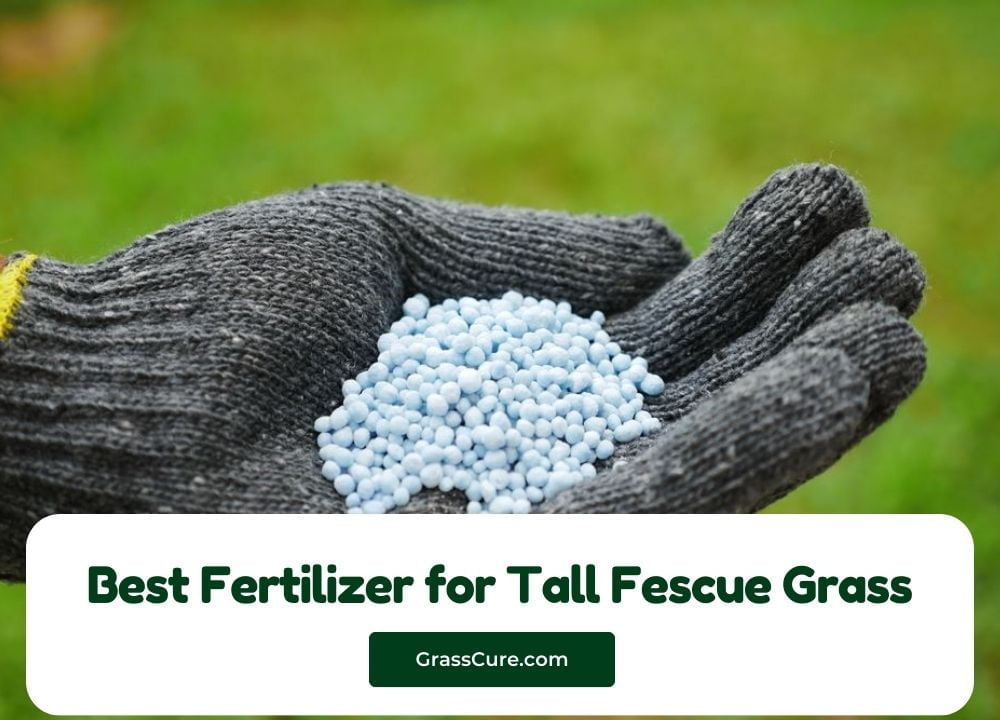Maintaining a lush, green lawn during the summer months can be a challenging task for homeowners and gardeners alike. As temperatures rise and rainfall becomes sporadic, grass faces unique stressors that can hinder its growth and vitality. Proper fertilization plays a crucial role in promoting healthy grass during this season, providing essential nutrients that help it thrive despite the heat. This article aims to explore the Best Fertilizer For Grass In Summer , offering insights into the types of fertilizers available, their benefits, and practical tips for application. By understanding how to effectively nourish your lawn, you can achieve a vibrant and resilient landscape all summer long.
Contents
Understanding Grass Growth in Summer
In summer, grass growth is influenced by various environmental factors, including temperature, humidity, and sunlight. Different grass types, such as cool-season and warm-season grasses, exhibit distinct growth patterns during this season:
Cool-Season Grasses (e.g., Kentucky bluegrass, fescue) typically thrive in the spring and fall but may struggle during the peak summer heat, leading to slower growth or dormancy. These grasses often require additional care, such as consistent watering and strategic fertilization, to maintain their health in high temperatures.
Warm-Season Grasses (e.g., Bermuda, zoysia) flourish during the summer months, actively growing as temperatures rise. These grasses benefit from fertilization to support their robust growth and color, helping them withstand stress from heat and drought.
Environmental Factors Affecting Grass
- Heat: High temperatures can cause stress, leading to issues such as wilting and reduced growth. Grass may enter a dormant state to conserve resources.
- Humidity: High humidity can promote fungal diseases, while low humidity may lead to drought stress, making it essential to monitor moisture levels.
- Sunlight: Intense sunlight is beneficial for warm-season grasses but can scorch cool-season varieties. Providing shade through landscaping can help mitigate stress.
Common Summer Grass Problems
During summer, lawns may encounter several issues, including:
- Drought: Insufficient rainfall and high evaporation rates can lead to dry patches and stressed grass.
- Pests: Grubs and other insects can become more active, damaging roots and foliage.
- Diseases: Fungal infections, such as brown patch and dollar spot, can thrive in warm, humid conditions, affecting grass health.
The Role of Fertilizer in Summer Lawn Care
Fertilizer plays a vital role in maintaining a healthy lawn during the summer months, as it provides essential nutrients that support grass growth, resilience, and overall health. Understanding the specific nutrient needs of grass in summer and how fertilizer can address these needs is crucial for effective lawn care.
Nutrient Needs of Grass During Summer
During the summer, grass requires a balanced supply of nutrients to thrive, particularly nitrogen (N), phosphorus (P), and potassium (K). Each nutrient serves a unique purpose:
- Nitrogen (N): Promotes lush, green growth and helps the grass recover from heat stress. Adequate nitrogen levels enhance photosynthesis, leading to a vibrant lawn.
- Phosphorus (P): Supports root development and overall plant health. While phosphorus is essential for establishing new grass or overseeding, its importance diminishes in established lawns during summer.
- Potassium (K): Enhances drought resistance, strengthens cell walls, and improves disease resistance. Potassium is crucial for helping grass withstand heat and stress.
Benefits of Using the Right Fertilizer in Summer
- Improved Growth and Color: Proper fertilization boosts chlorophyll production, leading to greener, healthier grass that can withstand summer conditions.
- Increased Stress Tolerance: A well-fertilized lawn is more resilient to heat, drought, and disease, reducing the likelihood of lawn problems.
- Enhanced Root Development: Fertilizers rich in potassium promote deep rooting, allowing grass to access moisture and nutrients more effectively, which is essential during dry spells.
- Boosted Recovery: Fertilization can help grass recover from damage caused by foot traffic, pests, or disease, ensuring a robust lawn throughout the season.
Types of Fertilizers for Summer Lawn Care
Choosing the right fertilizer for summer is crucial. Homeowners can opt for:
- Granular Fertilizers: These provide a slow release of nutrients, making them ideal for steady growth over time. They are applied using a spreader for even distribution.
- Liquid Fertilizers: These deliver nutrients quickly and are often used for a rapid boost in growth or to address specific nutrient deficiencies.
TOP PRODUCTS FOR YOUR GRASS
The new and advanced 16-4-8 Liquid Fertilizer – 32 Ounce by Simple Lawn Solutions

Simple Lawn Solutions’ Advanced 16-4-8 Balanced NPK Liquid Fertilizer is specially formulated to meet the nutrient needs of various grass types during the spring and summer. With a balanced NPK ratio of 16-4-8, this concentrated spray provides essential nutrients to promote vigorous growth, enhance color, and improve overall lawn health.
Key Features
- Balanced NPK Ratio: The 16-4-8 formulation offers a high nitrogen content, promoting lush green growth, while phosphorus supports root development and potassium enhances drought resistance and disease tolerance.
- Suitable for All Grass Types: This fertilizer is effective for a wide range of grass types, making it a versatile choice for homeowners looking to nourish their lawns.
- Easy Application: The concentrated liquid formula allows for quick and convenient application using a hose attachment, ensuring even coverage across the lawn.
- Concentrated Formula: A 32-ounce bottle can cover up to 5,000 square feet, making it an economical option for maintaining larger lawns.
Benefits
- Rapid Nutrient Absorption: The liquid formulation allows for quick absorption, ensuring that grass receives the necessary nutrients immediately, leading to faster results.
- Improved Lawn Appearance: Regular use of this fertilizer can result in a lush, green lawn that stands out in any landscape.
- Enhanced Stress Tolerance: With its balanced nutrient profile, this fertilizer helps grass withstand heat, drought, and potential disease outbreaks during the summer months.
- Convenient Application: The hose-end sprayer simplifies the application process, making it easy for homeowners to feed their lawns without the need for complicated equipment.
Application Tips
- Timing: Apply in early spring or throughout the summer to support active growth periods.
- Frequency: For optimal results, use every 4-6 weeks during the growing season.
- Watering: After application, lightly water the lawn to help the nutrients penetrate the soil and reach the root system.
The Advanced 16-4-8 Balanced NPK Liquid Fertilizer by Simple Lawn Solutions is an excellent choice for homeowners seeking a high-quality, effective fertilizer to promote healthy grass growth during the spring and summer months. Its balanced nutrient composition, ease of use, and versatility make it a top contender for anyone looking to enhance their lawn’s appearance and resilience.
The fantastic Extreme Natural Liquid fertilizer by Simple Lawn Solutions

The Extreme Grass Growth Lawn Booster by Simple Lawn Solutions is a powerful liquid fertilizer designed to enhance grass growth and promote vibrant lawn health. This concentrated formula, enriched with humic acid, is suitable for all grass types and is particularly effective for new lawns, overseeding, and revitalizing existing grass.
Key Features
- Concentrated Formula: The 1-gallon size offers a substantial amount of fertilizer, capable of treating up to 32,000 square feet, making it an economical choice for larger lawns.
- Humic Acid Enrichment: The inclusion of humic acid helps improve soil structure, enhances nutrient absorption, and promotes healthier root development, leading to stronger, more resilient grass.
- Rapid Growth Formula: Designed for quick absorption, this fertilizer provides an immediate boost to grass, making it ideal for use in spring or after overseeding.
- Suitable for Any Grass Type: Whether you have cool-season or warm-season grass, this product effectively supports diverse lawn types.
Benefits
- Enhanced Growth Rates: The specialized formulation encourages rapid growth, making it an excellent choice for new lawns or areas needing rejuvenation.
- Improved Soil Health: Humic acid not only aids nutrient uptake but also fosters beneficial microbial activity in the soil, leading to long-term lawn health.
- Vibrant Lawn Color: Regular use can result in a lush, green lawn, enhancing the overall aesthetic of your landscape.
- User-Friendly Application: The liquid spray format allows for easy application with a hose attachment, ensuring even distribution across your lawn without the need for complex equipment.
Application Tips
- Timing: Best applied in early spring or fall when grass is actively growing, or after seeding to support establishment.
- Frequency: For best results, apply every 4-6 weeks during the growing season to maintain robust growth.
- Watering: Water the lawn lightly after application to facilitate nutrient penetration and encourage uptake by the grass roots.
The Extreme Grass Growth Lawn Booster from Simple Lawn Solutions is a top-tier choice for homeowners looking to achieve rapid and robust grass growth. With its concentrated formula, humic acid enhancement, and compatibility with any grass type, this fertilizer provides an excellent solution for both new and established lawns. Whether starting fresh or revitalizing your lawn, this product helps ensure a vibrant and healthy outdoor space.
The Grass Fertilizer of 12.5 lb. by Scotts

Scotts Turf Builder Lawn Food is a highly effective fertilizer designed to promote lush, green lawns for all grass types. With a coverage of up to 5,000 square feet, this 12.5-pound bag is perfect for homeowners looking to enhance the health and appearance of their lawns. Its specialized formula provides the essential nutrients needed for robust growth, making it a trusted choice for lawn care enthusiasts.
Key Features
- NPK Ratio: The balanced NPK ratio (usually around 32-0-4) offers a high nitrogen content, promoting vigorous growth and vibrant color while supporting root development.
- All Grass Types: Suitable for various grass types, including cool-season and warm-season grasses, making it a versatile option for any lawn.
- Slow-Release Formula: The slow-release technology ensures a steady supply of nutrients over an extended period, promoting long-lasting results without the risk of burning the grass.
- Easy Application: Can be applied using a broadcast spreader for even distribution, ensuring that every part of the lawn receives the nutrients it needs.
Benefits
- Promotes Lush Green Growth: The high nitrogen content encourages rapid growth and deep green color, enhancing the overall appearance of the lawn.
- Strengthens Root System: The nutrients in Scotts Turf Builder support healthy root development, allowing grass to better withstand heat and drought.
- Improves Lawn Resilience: Regular use helps improve the overall health of the lawn, making it more resilient to pests, diseases, and environmental stressors.
- User-Friendly: The straightforward application process makes it easy for homeowners to achieve professional-looking results without the need for complex techniques.
Application Tips
- Timing: Best applied during the growing season (spring and early summer) for optimal results. Can also be used in fall to prepare the lawn for winter.
- Frequency: For maximum effectiveness, apply every 6-8 weeks during the growing season to maintain a healthy lawn.
- Watering: Water the lawn thoroughly after application to help the fertilizer penetrate the soil and reach the roots effectively.
Scotts Turf Builder Lawn Food is a reliable and efficient fertilizer that caters to the needs of all grass types, making it a staple in lawn care. Its balanced nutrient formulation, ease of application, and long-lasting effects ensure that homeowners can enjoy a vibrant, healthy lawn throughout the growing season. Whether you’re looking to establish a new lawn or improve an existing one, Scotts Turf Builder provides the essential nutrients to help you achieve a lush, green outdoor space.
The 0636 Organic Nitrogen Fertilizer of 32-Pound by Milorganite

Milorganite All-Purpose Fertilizer is a premium eco-friendly product designed to nourish lawns, flowers, and gardens. With a slow-release nitrogen formulation of 6-4-0, this 32-pound bag provides essential nutrients that promote healthy growth while being safe for the environment. This organic-based fertilizer is derived from treated wastewater, making it a sustainable choice for environmentally conscious gardeners.
Key Features
- NPK Ratio: The 6-4-0 formulation provides a balanced supply of nitrogen, phosphorus, and potassium, with a focus on nitrogen for robust foliage growth.
- Slow-Release Formula: The slow-release mechanism ensures that nutrients are made available gradually, reducing the risk of nutrient leaching and promoting long-term plant health.
- Eco-Friendly: Milorganite is made from recycled organic matter, making it a sustainable choice that reduces waste and supports environmental stewardship.
- Versatile Use: Suitable for a wide range of applications, including lawns, flower beds, vegetable gardens, and shrubs, making it a versatile addition to any gardener’s toolkit.
Benefits
- Promotes Healthy Growth: The high nitrogen content encourages lush green foliage and vigorous growth in grass and plants, enhancing the overall health of your lawn and garden.
- Improves Soil Structure: The organic matter in Milorganite helps improve soil structure, moisture retention, and microbial activity, fostering a healthy growing environment.
- Safe for Pets and Children: As an organic product, Milorganite is safe to use around pets and children, allowing for worry-free application in family yards and gardens.
- Long-Lasting Effects: The slow-release nature of the fertilizer means that nutrients are available to plants over an extended period, reducing the need for frequent applications.
Application Tips
- Timing: Apply in spring and early fall when grass and plants are actively growing for best results.
- Frequency: Depending on the specific needs of your lawn or garden, applications can be made every 6-8 weeks throughout the growing season.
- Application Method: Use a broadcast spreader for even distribution, and follow up with a thorough watering to help activate the fertilizer and promote nutrient absorption.
Milorganite All-Purpose Eco-Friendly Slow-Release Nitrogen Fertilizer is an excellent choice for homeowners looking to enhance their lawns, flowers, and gardens sustainably. Its balanced nutrient profile, slow-release formulation, and eco-friendly nature make it a versatile and responsible option for promoting healthy growth. With Milorganite, gardeners can cultivate vibrant landscapes while supporting environmental sustainability, ensuring a beautiful and thriving outdoor space.
The PGF Complete 16-4-8 Fertilizer by The Andersons

The Andersons Professional PGF Complete 16-4-8 Fertilizer is a high-quality, all-purpose lawn food designed for homeowners and lawn care professionals alike. With a balanced NPK ratio of 16-4-8, this 40-pound bag not only provides essential nutrients for robust grass growth but also includes humic acid to enhance soil health and nutrient uptake.
Key Features
- Balanced NPK Ratio: The 16-4-8 formulation offers a high nitrogen content to promote vigorous growth, while phosphorus supports root development and potassium enhances drought resistance and overall plant health.
- Humic Acid Inclusion: The addition of humic acid helps improve soil structure, increases microbial activity, and enhances nutrient absorption, leading to healthier grass.
- Versatile Application: Suitable for all grass types, including cool-season and warm-season varieties, making it a great choice for diverse lawns.
- Coverage: One 40-pound bag can cover up to 10,000 square feet, making it efficient for treating larger areas.
Benefits
- Promotes Lush, Green Lawns: The high nitrogen content encourages rapid growth and a deep green color, improving the overall appearance of your lawn.
- Enhances Soil Health: The humic acid in the fertilizer supports beneficial microorganisms in the soil, improving nutrient availability and enhancing soil structure.
- Improves Drought Tolerance: The balanced nutrient profile helps grass develop strong roots, making it more resilient to drought and stress.
- User-Friendly Application: The granular form allows for easy application with a spreader, ensuring even coverage across the lawn.
Application Tips
- Timing: Best applied during the active growing season in spring and early fall to support optimal growth and recovery.
- Frequency: For best results, apply every 6-8 weeks during the growing season, adjusting based on specific lawn conditions and needs.
- Watering: Water the lawn thoroughly after application to help the fertilizer penetrate the soil and activate the nutrients for grass uptake.
The Andersons Professional PGF Complete 16-4-8 Fertilizer with Humic is a top-tier choice for anyone looking to enhance their lawn’s health and appearance. Its balanced nutrient composition, combined with the benefits of humic acid, ensures that grass receives the necessary support for vigorous growth and resilience. Whether you’re a homeowner seeking a lush lawn or a professional lawn care provider, this fertilizer delivers exceptional results, making it an essential addition to your lawn care routine.
Buying Guide for Lawn Fertilizers
When choosing the right lawn fertilizer, there are several factors to consider to ensure that you select a product that meets your lawn’s specific needs. Here’s a comprehensive buying guide to help you make an informed decision:
Understand Your Lawn’s Nutritional Needs
- Soil Test: Conduct a soil test to determine the nutrient levels and pH of your soil. This will help identify specific deficiencies and inform your choice of fertilizer.
- Grass Type: Consider the type of grass you have (cool-season vs. warm-season) as different varieties have unique nutrient requirements.
Choose the Right NPK Ratio
- Nitrogen (N): Essential for leaf and stem growth. High nitrogen fertilizers are suitable for promoting lush, green lawns.
- Phosphorus (P): Important for root development and flower/seed production. Useful for new lawns or during overseeding.
- Potassium (K): Enhances drought resistance and disease tolerance. A balanced fertilizer typically has a moderate amount of potassium.
- Example Ratios: Look for common ratios like 16-4-8 for balanced growth or 10-10-10 for general maintenance.
Decide on Fertilizer Type
- Granular Fertilizers: These slow-release options provide a steady supply of nutrients over time. They can be spread evenly across the lawn using a broadcast spreader.
- Liquid Fertilizers: Fast-acting and ideal for quick nutrient absorption, liquid fertilizers are typically easier to apply but may require more frequent applications.
- Organic Fertilizers: Made from natural sources, these products are eco-friendly and improve soil health over time but may take longer to show results.
Consider Application Method
- Spreaders: Check if the fertilizer is suitable for your spreader type (broadcast or drop spreaders) for even application.
- Hose-End Sprayers: For liquid fertilizers, ensure you have the appropriate equipment for easy application.
Evaluate Coverage and Cost
- Coverage Area: Look at how much area the fertilizer will cover (e.g., 5,000 sq. ft. vs. 10,000 sq. ft.) and calculate the cost per square foot to determine the best value.
- Price: Compare prices across different brands and formulations, but consider quality and effectiveness over just cost.
Check for Additional Features
- Slow-Release Technology: Helps reduce the frequency of applications and minimizes the risk of nutrient runoff.
- Humic Acid or Other Additives: Some fertilizers include humic acid or beneficial microorganisms that improve soil health and nutrient uptake.
Read Reviews and Recommendations
- Look for customer reviews and expert recommendations to gauge the effectiveness of the fertilizer. Online platforms and gardening forums can provide valuable insights.
Follow Instructions
- Always follow the manufacturer’s application instructions regarding timing, frequency, and watering after application to maximize results and avoid over-fertilization.
Conclusion
Choosing the right fertilizer is essential for maintaining a healthy, vibrant lawn during the summer months. With various options available, understanding the specific needs of your grass type, soil conditions, and environmental factors will guide you in selecting the best fertilizer. Whether opting for a balanced NPK formula, a slow-release granular fertilizer, or a fast-acting liquid option, each product has its unique benefits that can enhance growth, color, and resilience.
Regular fertilization not only promotes lush, green grass but also strengthens root systems, improves drought resistance, and boosts overall lawn health. Additionally, considering eco-friendly options can contribute to a sustainable gardening practice while ensuring a thriving outdoor space.
By applying the right fertilizer at the appropriate times and following best practices, you can achieve a beautiful lawn that stands out throughout the summer. With the information and guidance provided in this article, you are well-equipped to make informed decisions, leading to a successful lawn care routine that ensures your grass flourishes all season long.
FAQ: Fertilizers for Grass in Summer
1. What is the best type of fertilizer for grass in the summer?
- The best type of fertilizer for summer grass is typically one with a balanced NPK ratio that emphasizes nitrogen (e.g., 16-4-8). Slow-release granular fertilizers are often recommended for steady nutrient supply, while liquid fertilizers can provide quick boosts.
2. How often should I fertilize my lawn in the summer?
- Generally, it’s best to fertilize every 6-8 weeks during the summer growing season. This timing may vary based on grass type, local climate, and specific product instructions.
3. Can I use winter fertilizers in the summer?
- Winter fertilizers, which often have higher potassium content, are formulated to help grass survive cold temperatures and stress. It’s best to use fertilizers specifically designed for summer growth to meet the current needs of your lawn.
4. How do I know if my lawn needs fertilizer?
- Signs that your lawn may need fertilizer include yellowing or thinning grass, slower growth, and reduced vigor. Conducting a soil test can provide valuable insight into nutrient deficiencies.
5. Is it safe to fertilize my lawn during a heatwave?
- It is generally not recommended to fertilize during extreme heat as it can stress the grass and lead to burn. Instead, wait for cooler temperatures or apply fertilizers in the early morning or late evening.
6. What are the benefits of using organic fertilizers?
- Organic fertilizers improve soil health, enhance microbial activity, and provide a slow-release source of nutrients. They are often safer for pets and children and contribute to sustainable gardening practices.
7. How should I apply fertilizer?
- For granular fertilizers, use a broadcast spreader for even distribution, and follow up with watering to help nutrients penetrate the soil. Liquid fertilizers can be applied using a hose-end sprayer for convenience and efficiency.
8. What happens if I over-fertilize my lawn?
- Over-fertilizing can lead to nutrient burn, which manifests as brown or yellow patches on grass. It can also increase the risk of pest infestations and environmental runoff, which can harm local ecosystems.
9. Can I fertilize newly seeded grass?
- Yes, but it’s important to use a starter fertilizer that is low in phosphorus or a balanced option. Wait until the grass is established (usually after a few mowings) before applying higher nitrogen fertilizers.
10. What is humic acid, and why is it beneficial?
- Humic acid is a natural compound that improves soil structure, enhances nutrient uptake, and stimulates microbial activity. Fertilizers containing humic acid can lead to healthier grass and better soil health.
References for Fertilizers for Grass in Summer
- University Extension Services:
- Many universities provide extensive resources on lawn care, including fertilization guidelines tailored to local conditions. Check the websites of local agricultural extension services (e.g., University of California Agriculture and Natural Resources, Texas A&M AgriLife Extension) for research-based recommendations.
- Lawn Care Industry Experts:
- Publications from lawn care professionals and companies, such as Scotts, The Andersons, and Simple Lawn Solutions, often include valuable information about their products, application techniques, and best practices for fertilizing grass.
- Soil Testing Laboratories:
- Websites of soil testing labs often provide insights into understanding soil nutrient levels and how to interpret soil test results, helping homeowners make informed decisions about fertilization.
- Gardening Books:
- Books such as “The Lawn Bible” by Paul Tukey and “Lawn Care for Dummies” by Lance Walheim offer detailed advice on maintaining a healthy lawn, including fertilization strategies for different grass types.
- Government Agricultural Departments:
- The U.S. Department of Agriculture (USDA) and similar organizations in other countries provide guidelines on sustainable lawn care practices, including the use of fertilizers.
- Academic Journals:
- Research articles in agricultural and horticultural journals often explore the effects of various fertilizers on grass growth, soil health, and environmental impact. Journals such as “Agronomy Journal” and “HortScience” can be valuable resources.
- Online Gardening Forums and Blogs:
- Websites like Gardening Know How and The Spruce feature articles and community discussions on lawn care, where experienced gardeners share tips and advice about fertilizers and their application.






